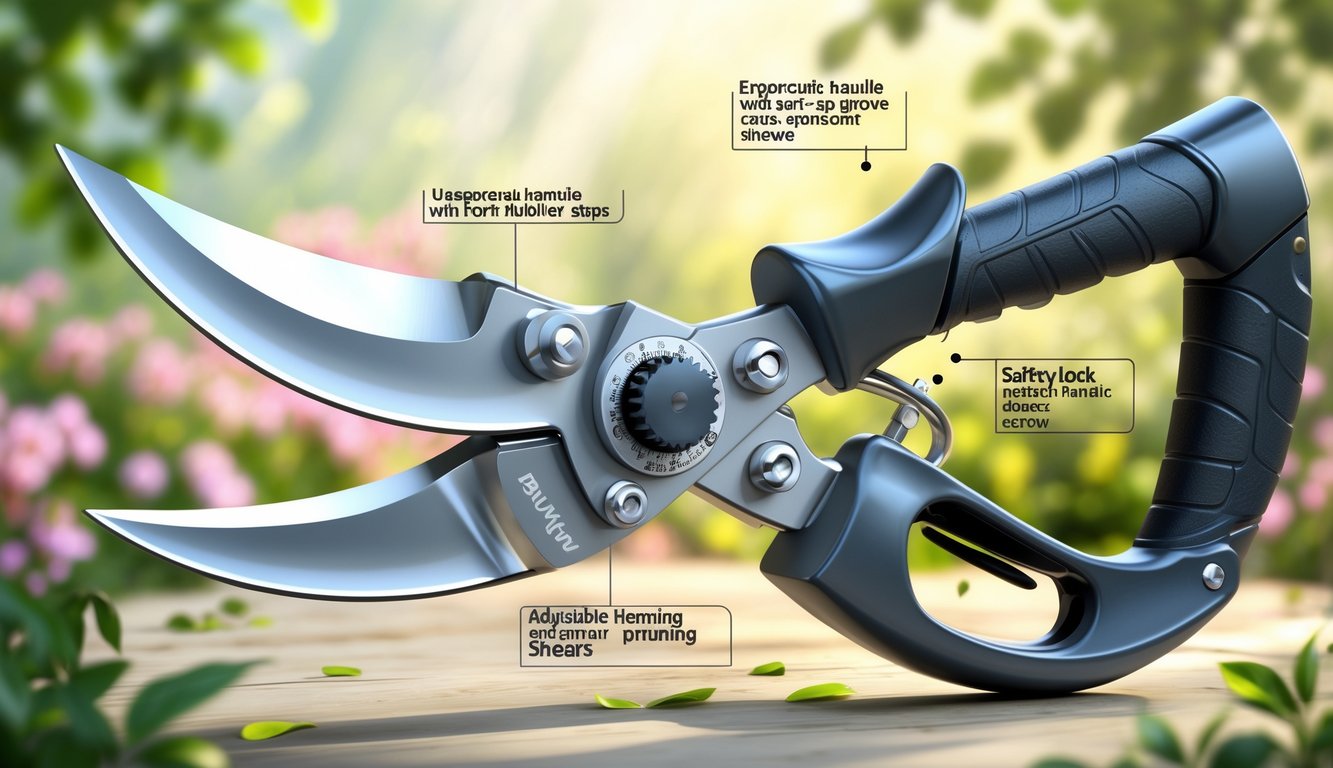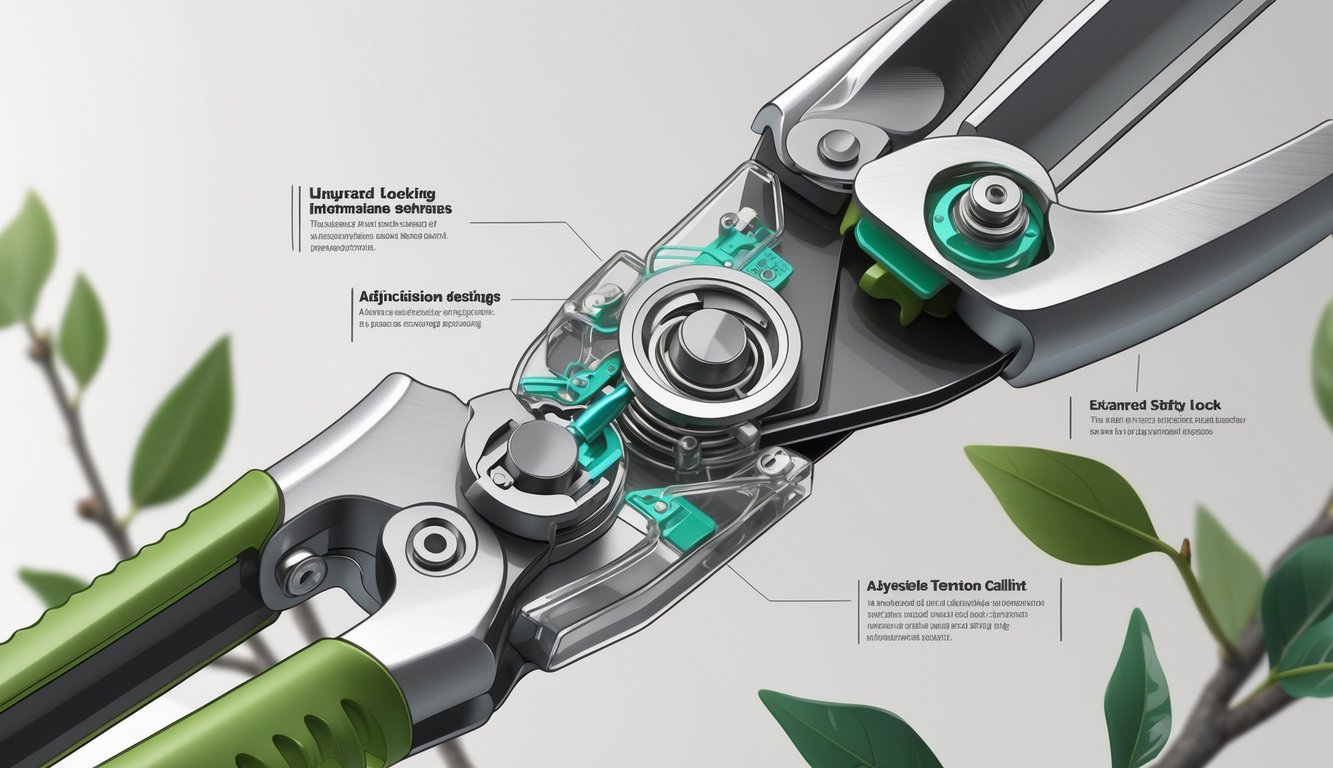
Handle Ergonomics Beyond Comfort
Long day in the garden, hands and wrists aching, and I’m not even sure what’s causing it. Ergonomic handles? Thought it just meant extra padding or a weird bend. Turns out, there’s way more to it.
Swiveling Handles for Reduced Hand Fatigue
Swivel handles. I thought they were a gimmick. Then I watched a guy cut fifty rose stems—barely looked tired. The handle pivots so your hand doesn’t twist the same way every time. If you do lots of detail work, it means fewer cramps. Felco Model 7 has it. People with arthritis love it. I still get sore, but maybe that’s just me. Supposedly, ergonomic research says it cuts down on hand strain by 30%. Weird downside: in wet weather, the handle squeaks. After a few hours, it’s all you hear.
Non-Slip Grip Materials
I can’t with tools that slip the second they get wet. Non-slip grip matters way more than anyone admits. Pruners with bare plastic handles? Useless after rain. The new bypass shears use anti-slip rubber, which cushions shock and keeps things steady. Not all “ergonomic” grips are equal—a soft foam doesn’t help if the handle’s the wrong size. Strangest thing: a cheap set from the hardware store worked better last winter than a pricey “pro” tool, just because the rubber was stickier. Downside: the grips soak up rain and take forever to dry. Anyone got a fix that isn’t just towel-drying forever? Because I don’t.
Advanced Locking Mechanisms

I keep jamming my fingers on stubborn pruner locks. “Safety first,” they say. Sure. But does anyone actually test these tiny levers and sliders? Because it’s always the smallest part that turns cleanup into a total nightmare.
Quick Release Safety Locks
So, picture this: I yank shears out of the drawer, and—of course—the blades are already half open. I’ve lost count of how many shirts I’ve ruined like this. Why can’t every pair just have a real quick release safety lock? Not that flimsy plastic nonsense, either; I want something that actually feels solid. Supposedly, over 17% of at-home gardening injuries involve, yeah, exposed blades—saw that in some 2023 report, which sounds about right.
Some shears, thankfully, let me flick a lever with my thumb and lock them shut—nothing fancy, just a reliable slide-and-click. That’s all I want: instant storage, zero drama. Ever dropped shears in a tote bag? Then you know, if there’s no tactile lock, you’re just gambling with your own fingers. I’ve had pruners tangle up in weeds just because I couldn’t get them closed fast enough. Swore off any model that jams up in wet weather. And get this—my neighbor’s cat triggered her crusty old shears just by brushing past. Now I test every lock for resistance, because apparently, that’s my life.
Nobody ever talks about maintenance, though. Just put a drop of oil on the mechanism every month and it won’t stick. Even my oldest Fiskars shears have a decent lock. Feels simple, but it means I can toss them in my toolbelt without worrying. Why’s that not a bigger deal?
One-Handed Operation Locks
Caught myself mid-snip, hands full of thorny branches—can’t let go, can’t risk blades popping open. One-handed locks are a lifesaver. You can flip the safety while still gripping the handle, which means no wasted motion, no scratched arms. There’s this gardener I follow who raves about indexed thumb locks—apparently, even lefties can use them, which is wild.
And those weird spring-assisted grips? Not just for show. They save me from fumbling with both hands or, worse, setting the shears down in wet mud. Read an article on ergonomic garden shears and, shocker, quick one-handed locks keep maintenance from turning into a chore—no screws, no tiny parts to lose. Last year, I broke a cheap lock right in the middle of a job (why do companies still use plastic here?). I finished the day with a rubber band holding the handles together. Was it ugly? Yes. Did it work? Also yes.
Honestly, with all the tech in gardening, why hasn’t anyone made a self-cleaning lock? Maybe someone will. Until then, I’m sticking with shears that let me lock, snip, and pocket without looking away from whatever I’m hacking at.
Pruners Built for Specific Gardening Tasks
I’ve definitely grumbled under my breath while trying to force the wrong pruner through old rose canes or almost snapping a skinny bonsai branch. The job totally changes depending on what’s in front of me. A dried-up twig? Not the same as a soft petunia stem. I mean, is it ever obvious which tool to use? Probably not. I should stop before I spill coffee on my notes.
Specialized Shears for Deadwood Removal
Deadwood. There’s no one-size-fits-all, but anvil pruners? They’re like that oddball uncle—awkward, but always gets it done. The whole “blade meets flat base” setup actually matters. Bypass models just sort of chew and mash. Anvil shears crush and slice at the same time, which is a little horrifying, but, well, it works. Oak, lilac, whatever stubborn branch—gone.
I keep seeing claims (like in this market overview) that anvil types beat bypass for deadwood. Feels true to me, and my neighbor’s always got opinions about it. I’ve used the Original LÖWE anvil—carbon steel, anti-friction coating, less gunk. Not pretty, but you press, it pops, done. Arborists I know say you’re not “damaging” dead tissue by crushing it.
And please, don’t use those sharp bypass pruners (like Gonicc or Fiskars) on deadwood. You’ll just pit the blade and then curse when it shreds your tomatoes later. Learned that the hard way.